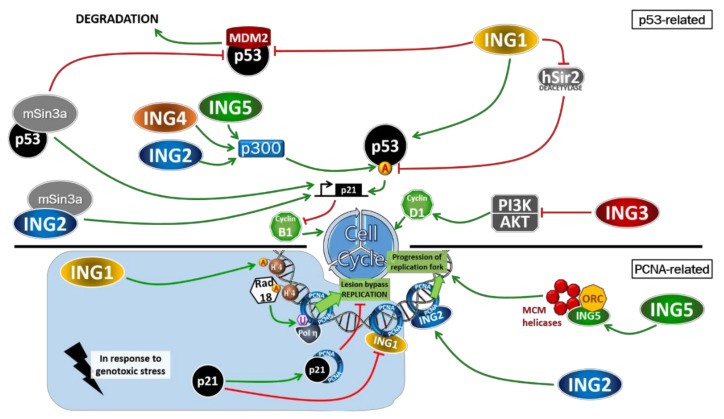Figure 3.
ING proteins regulate cell cycle in a p53-dependent and independent manner. Cell cycle is negatively regulated by INGs in various ways. UPPER PART: ING1 by interacting with p53 promotes its activation of p21. By inhibiting both deacetylase (hSir2) and degradation of p53, ING1 stabilizes p53. In addition, Sin3a can interact with p53 and stabilize it, then inhibiting MDM2-associated degradation of p53. ING2, ING4 and ING5 can induce negative cell cycle regulation through p300 activation leading to the acetylation of p53. In addition, ING2 in complex with mSin3A can directly activate p21 expression thus inhibiting cell cycle independently of p53. Finally, ING3 by inhibiting the PI3K/AKT activation, can decrease the expression of cyclin D1 resulting in cell cycle arrest. LOWER PART: in response to DNA damage or genotoxic stress, ING1 can facilitate lesion bypass and further replication by promoting Rad18 loading onto chromatin. In a more physiological way, ING2 interaction with PCNA promotes the progression of the replication fork onto chromatin. ING5 also helps this progression by interacting with the MCM helicases, then preventing replication fork collapsing or replicative stress.

